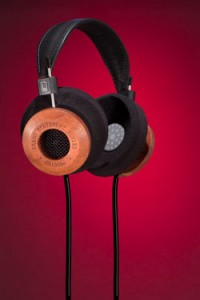People who make speakers worry about wood, because most speaker cabinets are made of the stuff now they are worrying about headphones. Source: The Sydney Morning Herald
Their task is to find the wood that gives the best audible results with their hardware, design and budget. They put as much work into selecting wood as winemakers put into choosing barrels.
Now it’s happening with headphones too.
Lately three headphone brands with wooden earcups have entered the market.
Many audiophiles place great faith in wood – indeed, 15 years ago a company called Shun Mook unveiled an ebony record clamp, a thing that sits on top of the centre boss of a spinning record to keep it steady. But this wasn’t just ebony, it was “extra heavy black ebony root immersed in the swamps of Africa for decades”.
Shun Mook explained that this wood offered “a unique power that no other wood possesses”.
The idea was that when a diamond stylus moves through a record’s groove, it creates a resonance that excites the molecules in the clamp, causing it to resonate in turn.
These resonations are transmitted back to the stylus and reproduced as “increased sound staging, enhanced focus and tonal warmth”. Back then it cost US$1200.
None of the headphones use swamp-seasoned ebony, but they are attractive. Grado is a leading brand in premium headphones and its RS1e open-backed numbers are made with mahogany, which it says enhances their natural ability to reduce sound colouration and produce consistent results.






